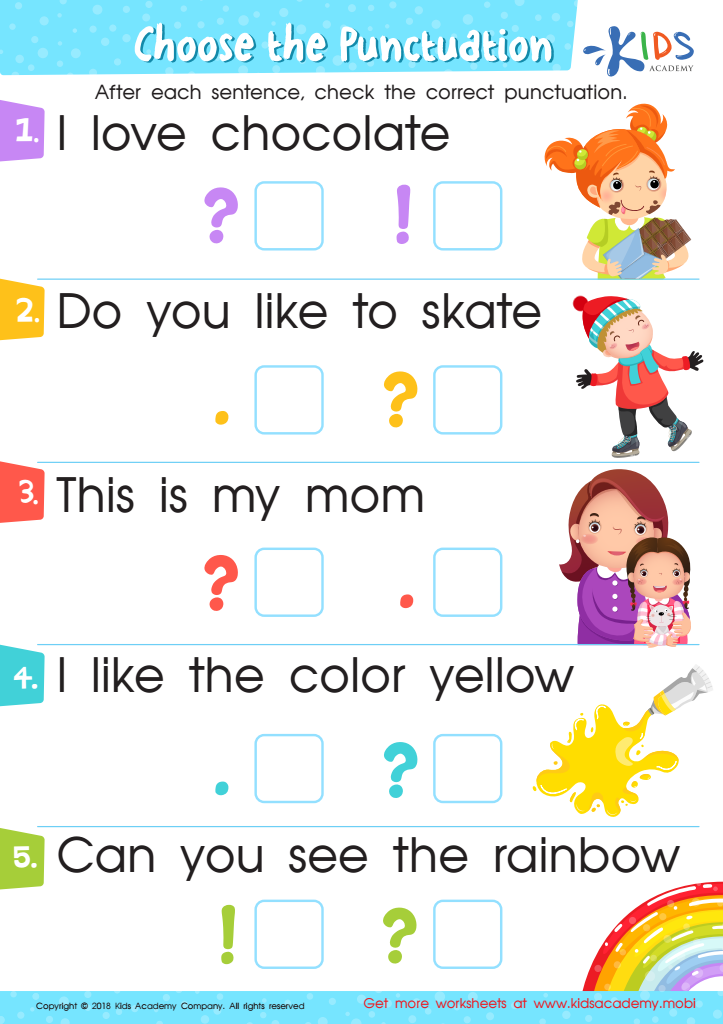Normal Punctuation worksheets activities
1 filtered results
-
From - To


Choose the Punctuation: Assessment Worksheet
Normal punctuation worksheets activities are an invaluable tool in the realm of language learning and teaching. These activities are designed to help students of all ages understand the importance of punctuation in written English, which is a crucial aspect of effective communication. Through engaging and structured exercises, learners can systematically improve their writing skills, ensuring clarity and coherence in their text.
Punctuation marks, such as commas, periods, question marks, and exclamation points, serve as the "traffic signals" of language. They guide readers through sentences, helping to convey the intended meaning and emotion of the writer. Without proper punctuation, messages can become confusing, misleading, or entirely misunderstood. This is why normal punctuation worksheets activities are so useful. They offer a focused way for students to practice and internalize the rules and applications of various punctuation marks in a variety of contexts.
One of the major benefits of these activities is the reinforcement of grammatical rules. As students complete the worksheets, they become more familiar with where and how to correctly use punctuation marks. This repetition solidifies their understanding and makes correct punctuation a habit in their writing.
Moreover, normal punctuation worksheets activities encourage critical thinking. Students must read sentences or passages and decide where punctuation is needed, what kind of punctuation is appropriate, and why. This type of analysis strengthens their problem-solving skills and enhances their ability to write with purpose and precision.
Additionally, these activities are adaptable to different learning styles and levels. Whether a student is a visual learner who benefits from seeing examples, or a hands-on learner who prefers writing and correcting sentences, punctuation worksheets offer a variety of exercises to meet diverse needs.
In conclusion, normal punctuation worksheets activities are a fundamental component of language education. They provide a systematic approach to learning punctuation, improve writing skills, promote critical thinking, and cater to different learning preferences. By incorporating these activities into their study routine, students can significantly enhance their ability to communicate effectively through written text.

 Assign to the classroom
Assign to the classroom












